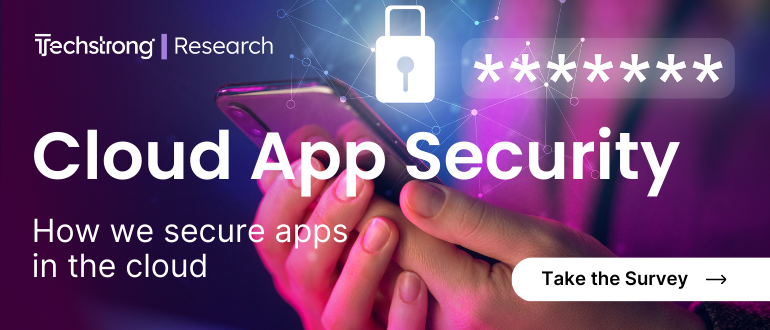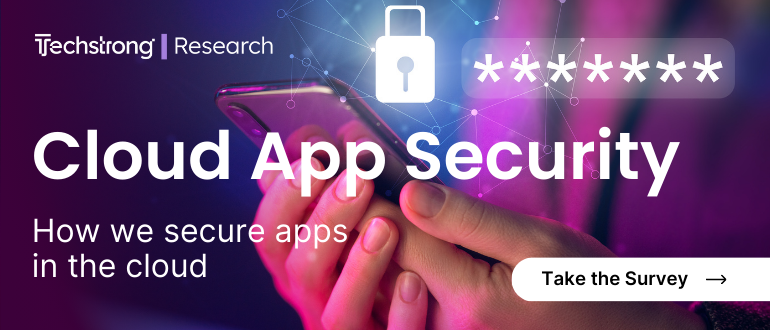
2024-6-21 16:11:8 Author: securityboulevard.com(查看原文) 阅读量:6 收藏
Reading Time: 5 min
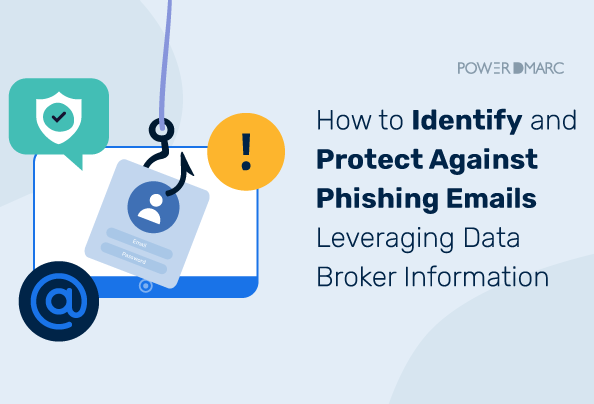
As technological advancements accelerate and internet usage increases, more and more data is available online. The increasing public availability of data and personal information contributes to a significant surge in cybercrime. According to Statista’s Market Insights, the global cost of cybercrime is expected to increase over the next four years, from $9.22 trillion in 2024 to $13.82 in 2028.
One kind of crime that falls under the umbrella term of cybercrime is phishing emails. Cybercriminals obtain information from data brokers and craft convincing phishing emails that, more often than not, deceive even the most cautious individuals. These can cause potential harm, such as financial loss through stolen credentials, malware infection, data breaches, and network compromises. Let’s look into how to identify such phishing emails and the preventive measures one can take to avoid them.
How Do Cybercriminals Use Data Broker Information?

Data brokers collect your personal information from various sources and compile detailed profiles. That’s why cybercriminals love data brokers. They hoard your info from everywhere: public records (voter rolls, property ownership), online stuff (browsing history, social media profiles, newsletter signups), and even commercial sources (loyalty programs, purchases). This intel helps them craft compelling and realistic phishing scams or impersonate you or trusted sources to steal private info or money.
Identifying Phishing Via Emails
Here are some ways you can single out phishing attacks leveraging emails as the primary medium. This gives you an insight into what tactics scammers usually use to deceive people into falling for their traps.
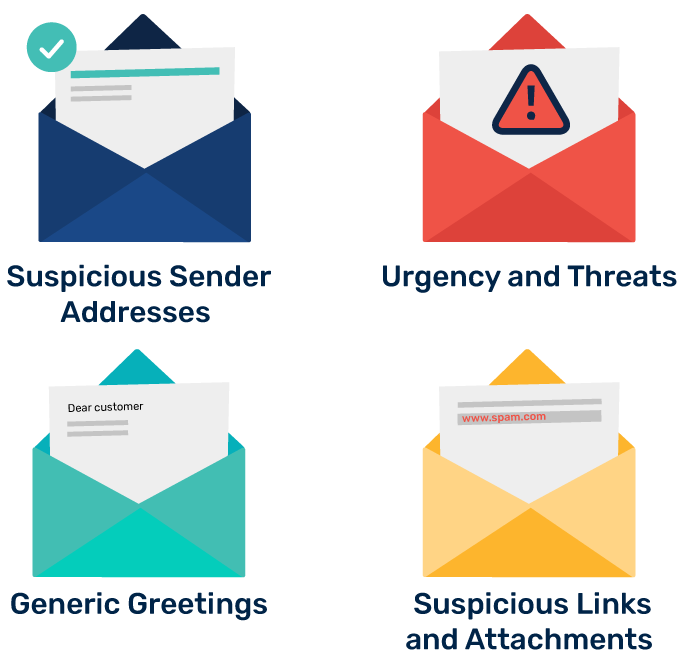
1. Suspicious Sender Addresses
Scammers usually try to deceive you by sending emails from apparent “legitimate sources.” However, one should look closely because these apparent legitimate source addresses often contain slight misspellings or additional characters.
A legitimate email should come from a trusted and well-known source. For instance, an actual bank email address would likely end in the bank’s domain (@bankabc.com), not a random domain like “@gmail.com.”
2. Urgency and Threats
Phishing emails usually create a sense of panic. Scammers phrase their sentences to prompt a user to take immediate action. They may also threaten to “suspend your account” if you don’t “verify” your details or prompt with “immediate action required.” Remember, legitimate companies won’t pressure you into immediate action.
3. Generic Greetings
Does the email begin with “Dear customer” and not your name? Generic greetings are the most common tactic phishers use to cast a wide net. Trustworthy companies address their customers by their names and typically personalize their greetings. However, you can never be completely safe because even phishers can mention your name in an email (thanks to data brokers). To avoid getting scammed, check for all sketchy signs before trusting an email source.
4. Suspicious Links and Attachments
You should never open links or attachments in emails from unknown senders. They can lead you to malicious websites or may infect your device with a virus. Even if you know the sender somewhat, you have to remain cautious. Hover over the link to see the actual web address. It may not match what’s being displayed.
Examples of Phishing Email Tactics
With data brokers’ help, phishers can be mistaken for being authoritative sources. Here are some common examples of how phishing emails try to deceive you.
1. Spoofed Emails from Banks
Data brokers can access a lot of your personal and financial information. Cybercriminals use or purchase this information to send emails that try to look like they are from your bank. These emails may warn you of suspicious activity detection and prompt you to click a link to verify your account.
Various tools can help reduce your digital footprint and prevent you from falling victim to fraudulent activities by phishers and data brokers. Tools like deleteme assist in opting out of data brokers and display a dashboard showing how many sites may have information about you, how many records have been removed, and how many personal items are found about you. You can monitor these monthly reports to be aware of your digital footprint and protect yourself from identity theft and other cyber crimes.
2. Fake Invoices from Service Providers
You may also sometimes receive an email asking you to pay your invoice for a service you use, such as a utility company or subscription service. This email instructs you to click a link to pay your invoice.
3. Impersonation of Popular Brands
Phishers also try to manipulate you into clicking order confirmation, account updates, or payment issues links that may appear to be from brands such as Amazon or PayPal and ask for your login credentials.
What to Do if You’ve Been Phished?
There are many proactive steps and measures you can take to prevent phishing, such as using email filtering tools that detect and quarantine suspicious emails before they reach your inbox, enabling multi-factor authentication to add a double layer of security to your account beyond just your password, verifying the source, and looking for signs of authenticity.
If you’ve still been phished despite your best efforts, the first step is to change passwords for all compromised accounts. Consider changing passwords for accounts with similar or the same passwords as the ones the hacker captured. If you entered your credit or debit card information on the phishing page, quickly cancel your card. On your credit account, put a fraud alert.
Contact the person or company the attacker impersonated; it could be a major bank, a friend, or a CEO. Delete your email account or go offline so the phishing links don’t spread to your contact list. It’s always ideal to scan your device for viruses, as malware that can corrupt your computer or device can be installed if you click the malicious link.
For organizations and businesses suffering from domain impersonation threats – email authentication is an effective solution. Leveraging industry-acclaimed email authentication protocols like DMARC can become a game-changer in preventing attackers from impersonating your domain. It also helps prevent unauthorized sources from sending emails from your domain.
Other Scams to Be Wary Of
Here are some other scams you should keep safe from:
- Job offer scams: be wary of unsolicited emails that offer you a job in a field you lack expertise in.
- Online shopping scams: Fake online stores that look legitimate but are set up to steal your money and personal information. These sites may offer goods at unbelievably low prices to lure in victims.
- Fake antivirus scams include pop-up alerts claiming that your computer is infected with a virus and directing you to purchase and download fake antivirus software.
Endnote
Privacy is at stake in a world paced by digital technology. It’s necessary to remain cautious whenever sharing your personal information online. Consider using privacy-focused tools and limiting information sharing. Many data brokers also offer opt-out options. You can visit their websites and follow the procedures to remove your information from their database.
If you are a user who receives phishing emails, or an impersonated company, follow the steps mentioned above to minimize such occurrences. Stay vigilant, educate yourself and others, and take proactive steps to protect your information from data brokers and phishing schemes.
To prevent email phishing at your organization, sign up for a free DMARC trial today!
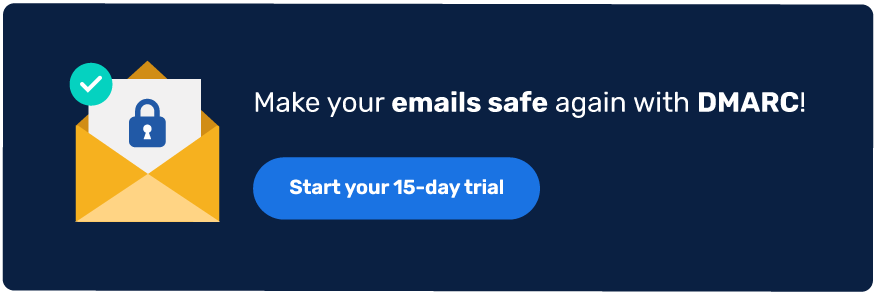
*** This is a Security Bloggers Network syndicated blog from PowerDMARC authored by Ahona Rudra. Read the original post at: https://powerdmarc.com/identify-phishing-emails-data-brokers/
如有侵权请联系:admin#unsafe.sh
